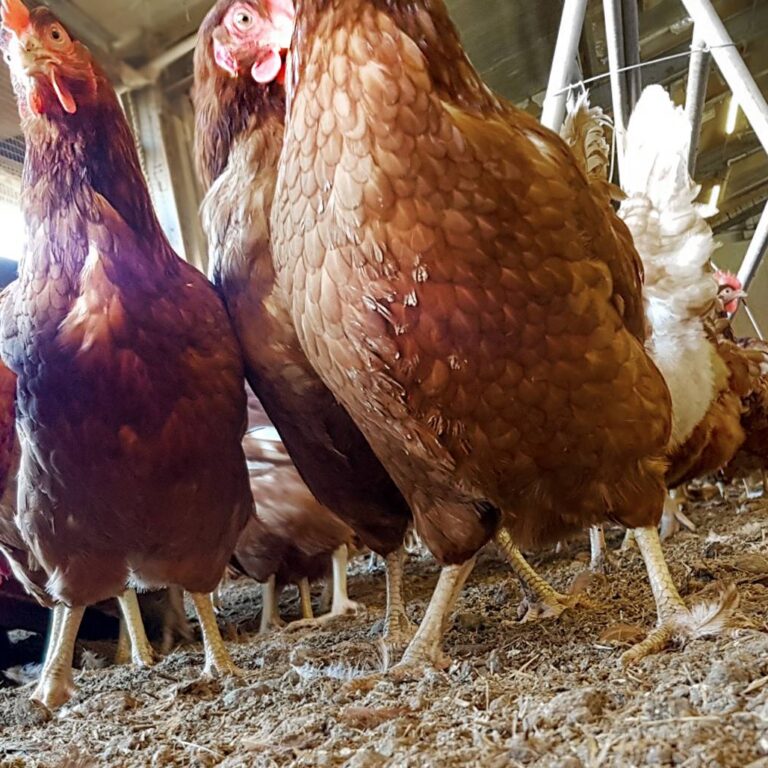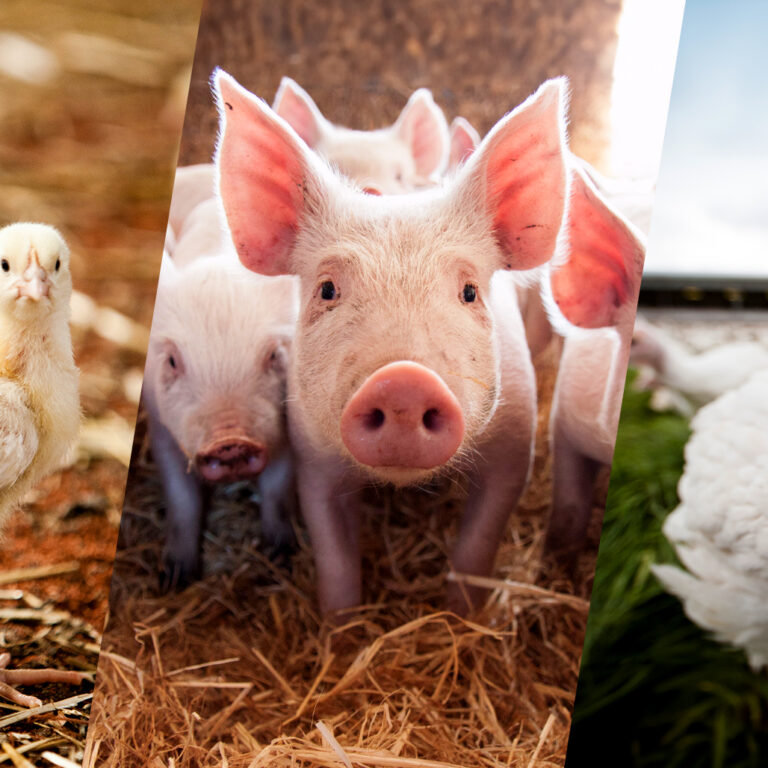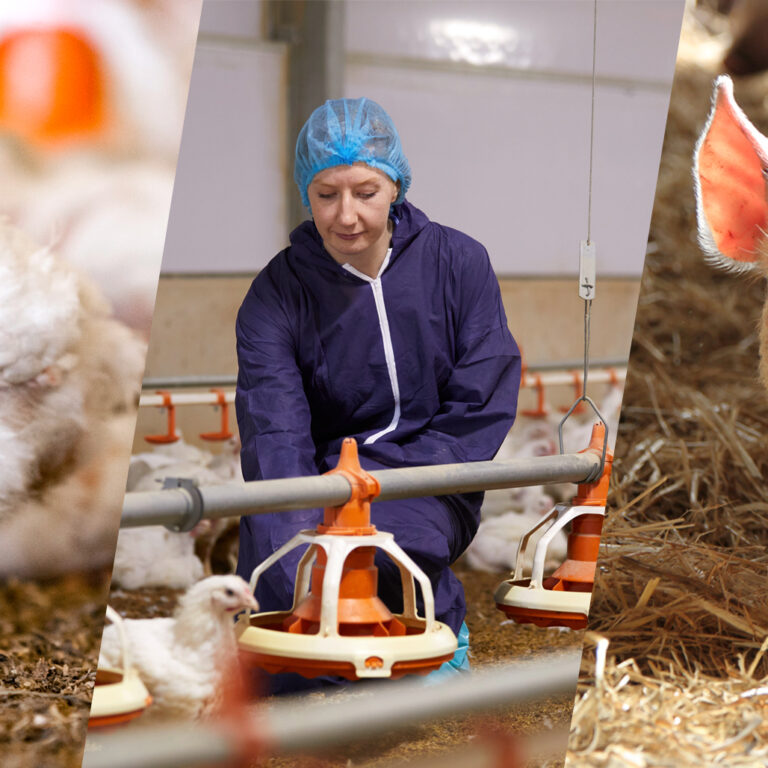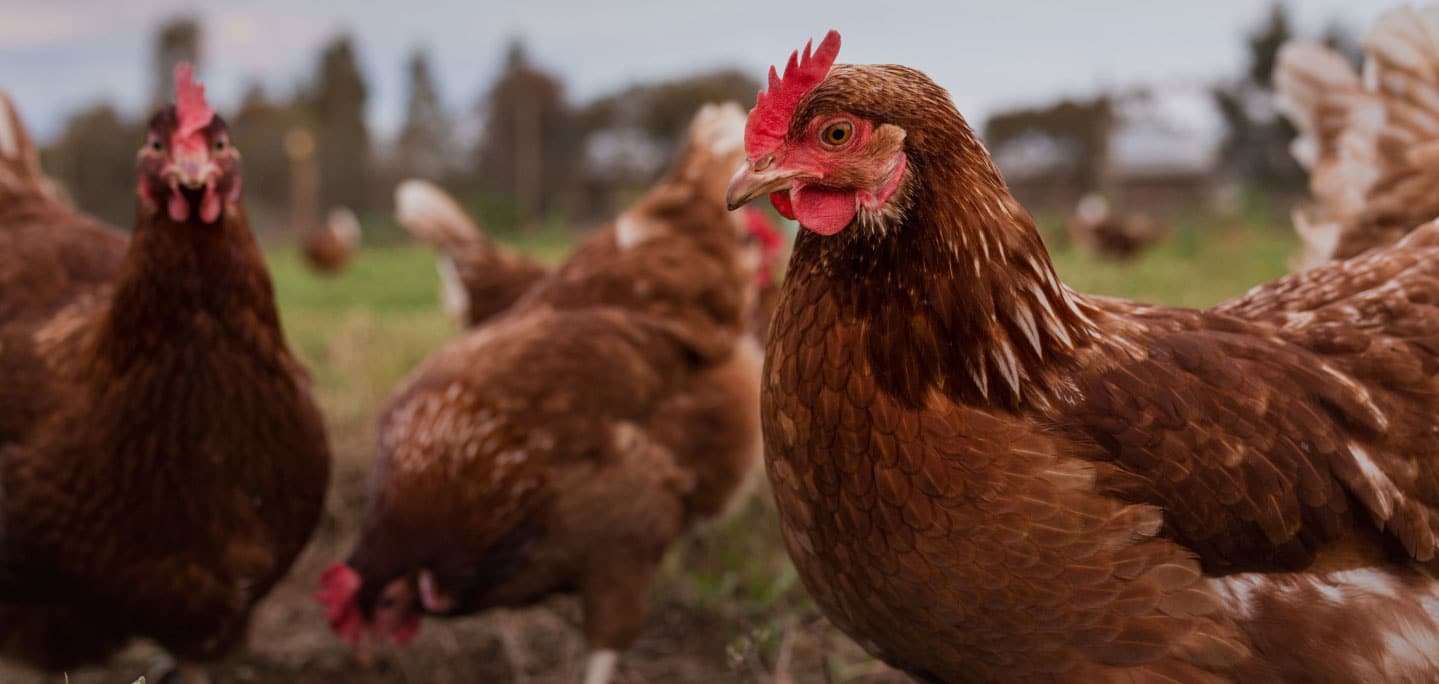It’s fair to say that most Australians want to know the eggs they eat have come from happy hens. But the reality is that the majority of egg production in Australia is still based in battery cages.
When confined to a battery cage, hens have less space than the size of an A4 sheet of paper to move in. These social, intelligent and curious animals suffer immensely when deprived of the ability to do the things they like to do.
But what does good welfare look like for layer hens?
What does ‘free range’ really mean?
For the average person, the concept of free range is one of hens living in a more natural environment, able to roam in paddocks, free from cages. On a well-managed free range farm, this is largely the case.
But being outside does not automatically equal good welfare. Ranges need to have adequate vegetation and overhead cover so that hens feel safe to venture onto them from the barns where they are housed overnight. If a range is not managed to encourage birds to access all areas, hens will naturally linger closer to the barn and their shelter, as they feel safer from predators.
It’s equally important that the barn system on a free range farm provides a good quality indoor environment as well, as layer hens will still spend a large portion of their time indoors. This means good quality and well-managed litter, perches and enrichment materials, access to nest boxes, good lighting and enough space to flap and stretch their wings.
If provided with a good quality range, and a suitable indoor environment, layer hens on free range farms can enjoy a good quality of life.
What role will indoor systems play in ending the battery cage?
Whilst free range systems, when properly managed, can provide a good life for layer hens, barn systems can also provide everything hens need for their physical and psychological welfare.
A good indoor/barn system is one where hens are provided with places to perch and nest, with things to peck at and play with, with good quality litter that allows them to dust bathe and forage, better lighting and with enough space that they can exercise and socialise.
With these things provided for, indoor systems can not only provide an equally positive environment for hens as some free range systems, but they have the capacity to meet the scale of production needed to replace battery cage systems. Particularly if the indoor set up is an aviary, otherwise known as a multi-tier barn.
In the fight to end the battery cage, it’s important that consumers understand the complex needs of layer hens, and how they can be provided for in different farming systems. Most importantly, improving layer hen welfare is not as simple as access to the outdoors – there are many other components that will affect whether hens have a good life, both in free range and in indoor/barn systems.
You can find out more about what the RSPCA Approved Farming Scheme Standards for layer hens require, to protect hen welfare here. Or for a quick overview of the different systems in which layer hens are kept check out this diagram here.
Want more? NSW’s only free range RSPCA Approved farm is a family affair or Lucky Chicken Eggs kicking goals for women






